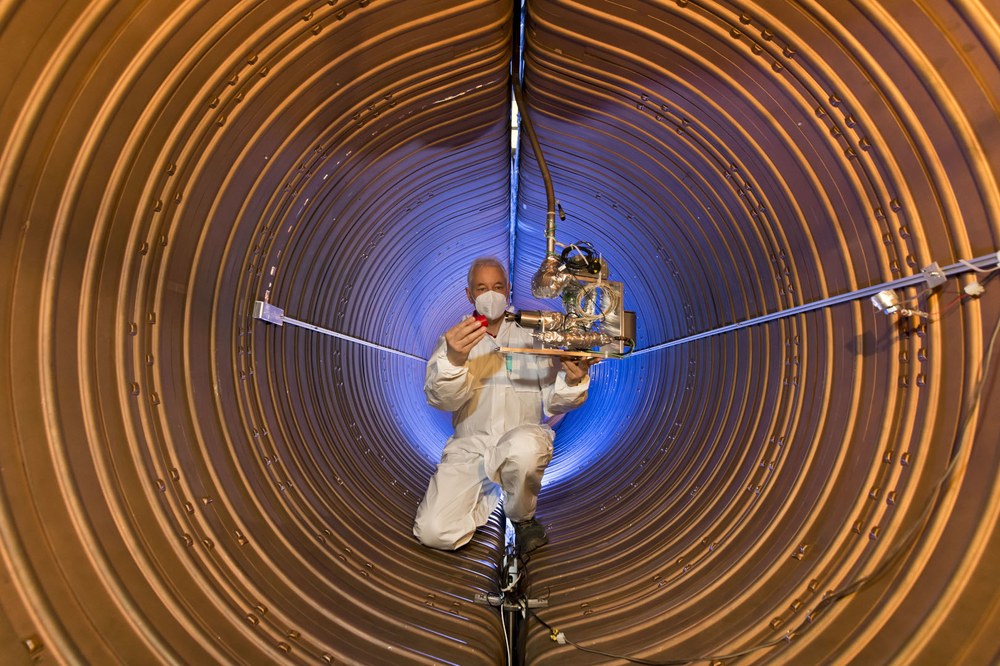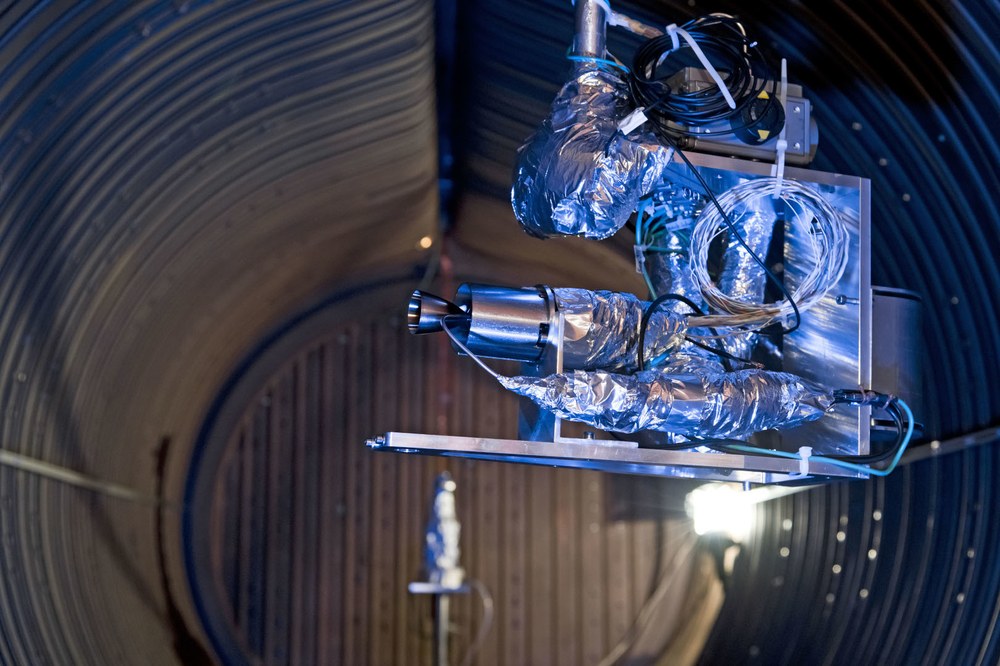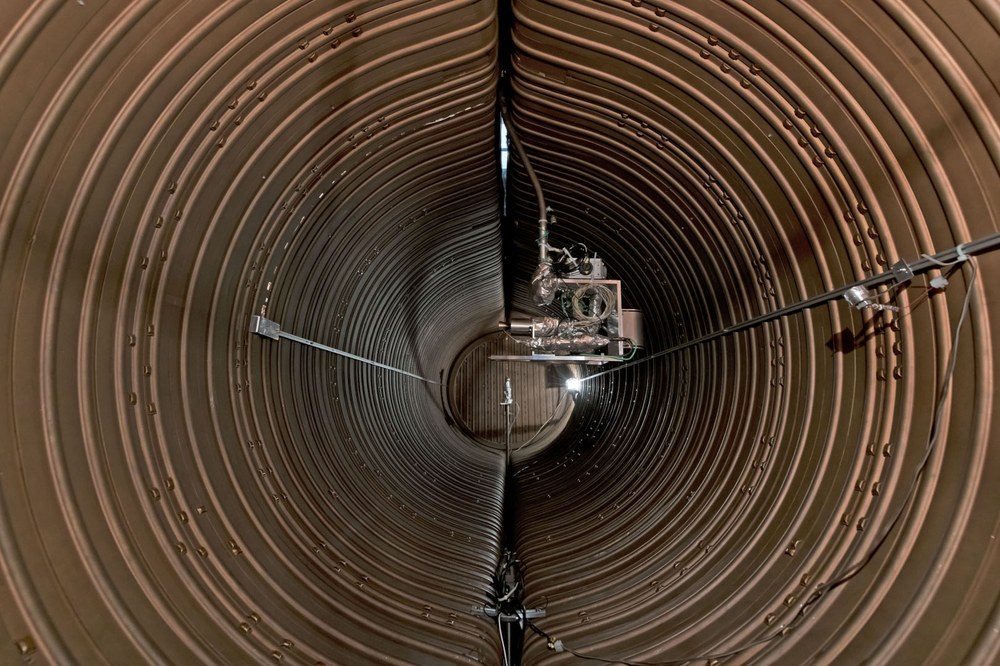DLR Göttingen helps in the search for signs of life in space



- Researchers at the DLR site in Göttingen are investigating thrusters for NASA.
- The focus is on possible missions to search for signs of life in the Solar System.
- Göttingen is home to a unique facility for researching engine exhaust gases.
- Focus: Spaceflight
Is there life on other planetary bodies? Jupiter's moon Europa could provide an answer to this question: it is believed to harbour an ocean of water beneath its icy surface. But how might an exploration mission to the Jovian satellite be conducted without contaminating the landing site? To find out, researchers at the German Aerospace Center (Deutsches Zentrum für Luft- und Raumfahrt; DLR) in Göttingen have carried out investigations in a unique facility on behalf of NASA's Jet Propulsion Laboratory (JPL).
All space missions that search for traces of life face the same problem: the possibility of contaminating the exploration site through propulsion exhaust. "Propellant exhaust contamination can be a problem with all spacecraft," explains Martin Grabe from the DLR Institute of Aerodynamics and Flow Technology. As soon as a thruster fires, it produces a plume that can adversely affect sensors such as cameras or instruments. When a spacecraft lands, these plumes hit the surface. "If the objective in the search for traces of life is to detect organic matter, it could, at worst, come from the spacecraft's own thrusters," says Grabe. Hydrazine thruster plumes contain components such as ammonia or carbon compounds – substances that are considered indicators of life.
One-of-a-kind experimental facility
The space researchers in Göttingen specialise in the field of thruster plume contamination. For this purpose, they operate several unique experimental facilities, including the High-vacuum plume test facility for chemical thrusters (STG-CT). "This is the only facility in the world with a pumping capacity so large that the propellant jets from the engines under investigation spread out as if they were in space," says Grabe. Conventional test facilities face the problem that the exhaust gases of the engine bounce off the wall and distort the plume under investigation. At the Göttingen STG-CT, the walls are cooled to minus 269 degrees Celsius with the help of liquid helium. As soon as a thruster plume hits the wall, it freezes – similarly to water on windshields during the winter. As a result, the jet behaves as it would in space, where it is not surrounded by walls. To create these ideal conditions, the experimental facility must be cooled down for three days. The subsequent reheating can take as long as five days.
In the STG-CT, two different thrusters and their effects on more than 120 different material samples were investigated. Most of the samples came from JPL, which also performed the chemical analysis of the samples. The thrusters were provided by NASA's Goddard Space Flight Center.
The Göttingen researchers used two measuring techniques to examine the thruster plume in a vacuum: with a mass spectrometer that measures the chemical composition of the impurities and with quartz crystal sensors that can detect layers as thin as a few atoms.
Hydrazine not completely decomposed in the exhaust plume
The analysis showed that different thrusters of similar types cause very different levels of contamination. An important finding here was the fact that it makes a difference whether an engine has already been ignited before landing – for example during a flight manoeuvre. Residues of hydrazine were found in the exhaust gas jets, which does not completely decompose, contrary to expectations. The Göttingen researchers also found that plume components containing hydrazine have a strong effect on copper surfaces, which play an important role in current space missions, such as Europa Clipper.
The findings of the investigations at DLR Göttingen will help to better assess contamination from propulsion systems of future spacecraft. "The more we know, the better spacecraft and missions can take into account the unavoidable propellant contamination already in the planning phase," says Grabe.
Further investigations
The tests took place within the framework of the EPIC project - Europa Lander Plume Induced Contamination. Scenarios for new investigations have already emerged. The European Space Agency (ESA) has awarded two contracts to the Göttingen scientists on the basis of this research.
